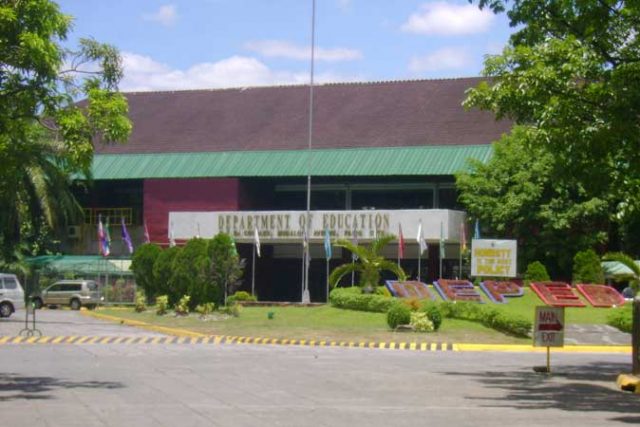“At the start of this pandemic, I warned that the battle could be long. Considering this, it was important to maintain fiscal responsibility. We must be ready for the long haul and keep our powder dry for a protracted battle.”
Finance Secretary Carlos G. Dominguez III thus started his keynote address at the Financial Executives Institute of the Philippines (Finex) general membership meeting on July 21, 2021. The conference theme was: “The DoF: Looking beyond 2022.”
“(But) unlike in a war where productive assets such as infrastructure and human capital are destroyed, the pandemic and the economic crisis it caused leave our economic resources intact. Our macroeconomic fundamentals remained solid,” he assured Filipinos via the Finex forum.
The long battle with this virus and the restrictions on movement to contain it have forced many economies to contract, Secretary Dominguez said. For 2020, our total revenues dropped by 9% to P2.856 trillion compared to P3.137 trillion in 2019. In the first five months of 2021, collections were 13% higher than the same period last year, reflecting the onset of recovery. Lower revenue collections and a higher public health bill translate into budget deficits, and we had to borrow more to cover the budget gap. “It is a necessity. This is the way the world works,” he said.
Dominguez admitted to “a temporary but controlled expansion of our deficit to-GDP ratio to 7.6% and debt-to-GDP ratio to 54.6% in 2020… these levels keep us well within the prescribed bounds of fiscal viability.” Yes, the Bureau of the Treasury said in February that “the deficit was more than double or 107% more than the P660.2-billion shortfall in 2019. The wider fiscal gap, however, was lower by 24.45% than the revised full-year program of P1.815 trillion” (Rappler.com, Feb. 26, 2021).
Questions from the floor showed worries about the “humongous” debt and alluded to the interest rates on those — a bugging concern for after 2022 and the repayment years. Dominguez gave an off-the-cuff answer that “of the $1.7 billion debt, $1.3 billion was from the Asian Development Bank (ADB), the World Bank (WB) and other international credit agencies, and the rest from our own (sourcing).” Another questioned about the drop in credit ratings.
Dominguez presented a chart that showed that credit agencies actually affirmed our high ratings, so that it was not difficult to engage in emergency financing with concessional rates. Dominguez rhetorically asked Fitch (the only credit agency that revised the outlook for the Philippines to negative) — “Have we slipped down the curve, or has the curve been forced down?”
“Although the negative impact of the pandemic on the Philippine economy has been significant, this will only be temporary. This outcome is mainly attributable to the fact that our economy is heavily consumption-driven. When the pandemic struck, consumer spending dropped. Many enterprises in the retail, hospitality, and tourism sectors were badly hit,” Dominguez said.
“We have the fiscal means to support not just our COVID-19 response, but also our long-term economic investments,” Dominguez assured all.
The Vaccination Program has a budget of P88.6 billion, enough to procure at least 148 million doses to inoculate 70 million adults or 100% of our adult population this year. He said the delay is because of the tight global vaccine supply. Plans for 2022 onwards include the inoculation of children and booster shots for those already vaccinated.
The Finance Department takes prides in its tax reform programs: the Financial Institutions Strategic Transfer (FIST) Act approved and implemented to help banks unload non-performing loans and assets to strengthen their lending capacity; and the Corporate Recovery and Tax Incentives for Enterprises (CREATE) Act to help businesses keep afloat by leaving more cash resources for firms to sustain employment or use for investments, and to position them to be more regionally competitive and attractive to foreign capital infusion.
“We get nothing from a closed-minded attitude towards foreign investments. With the continued globalization of supply chains, we either liberalize at a quicker pace or risk getting left behind. Our economy should no longer labor under the weight of dead economic orthodoxies. We must open up to the most mutually beneficial arrangements we can get from the rest of the world,” Dominguez stressed. He urges Congress to pass the amendments to the Foreign Investments Act, the Public Service Act, and the Retail Trade Liberalization Act.
At the Finex forum’s Q&A section, the common perception was verbalized that the massive reform programs that sacrificed government revenues benefitted the big businesses more than the smaller enterprises, and the strong and profitable ones more than the weak and struggling (many do not now even have taxable income after losses). Dominguez countered that 90% to 98% of businesses are small and medium enterprises that enjoyed a tax cut from 30% to 25% versus the tax cut of the big corporations from 30% to 20%. CREATE provides more than P1 trillion ($20.5 billion) worth of tax relief over the next 10 years. It has given P160 billion in direct subsidies, Dominguez said.
Will there be new stimulus packages coming before the end of the present administration (June 2022), someone asked? “Only what is necessary, affordable, and reasonably sustainable,” Dominguez replied. It will be recalled that the Finance Department opposed the House-proposed P401-billion economic stimulus fund, Bayanihan III, in April. “The government has already provided $5.5 billion in unconditional grants to about 22 million people and lowered business taxes by around $2.6 billion per year,” he said. Dominguez had said efforts to provide substantial support to the economy amid the pandemic should not come at the expense of the government’s long-term debt sustainability (mb.com.ph, April 15, 2021).
The Finance Department instead exalts the Build, Build, Build infrastructure modernization program that “has played the lead role in the recovery.” Programmed infrastructure spending will remain above 5% of our GDP until the end of the President’s term. Such economic investments have the highest multiplier effect. The modernization of our public infrastructure will not only serve to offset weakness in private investment this year but will also lay down the foundation for higher growth in the coming period, Dominguez said.
“Before we end our term, the Duterte administration will make sure that we help the next President and the next generations address fiscal and economic risks,” Dominguez promised. In the countdown of his remaining “344 days to June 30, 2022,” he has laid out his fiscal consolidation program as a starting point for the next Department of Finance, with a “playbook” as a suggestion for the next steps to proceed.
Dominguez hopes for the last-minute passage of the Real Property Valuation and Assessment Reform Act and the Passive Income and Financial Intermediaries Taxation Act, as completion of the Finance Department’s fiscal reform program, to be fully implemented by the next administration. Also pending is the Military and Uniformed Personnel Pension reform that will keep the system fundable, manageable, and fiscally sustainable for the long term.
Note that the government will need P848.39 billion annually for the next 20 years to pay for the pension, according to the Government Service Insurance System (GSIS). The non-contributory military pension has long exceeded its actuarial projections with several salary adjustments given across the ranks, the latest by President Rodrigo Duterte, who promised early in his term to “double the soldiers’ pay,” including all up to the generals. The annual military pension amount is bigger than the entire 2021 budget of the Department of Education, the agency that is given the biggest chunk of annual budgets.
Have no fear, Secretary Dominguez says. “Our strongest asset continues to be our population. With an average age of 25, we have a very young and skilled workforce. They will sustain demand and create the wealth for the national economy to resume its path of rapid growth. It is because of this demographic sweet spot that we are confident we can bounce back strongly from the impact of the pandemic.”
Amelia H. C. Ylagan is a Doctor of Business Administration from the University of the Philippines.
ahcylagan@yahoo.com







